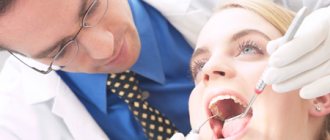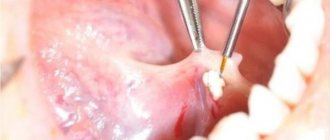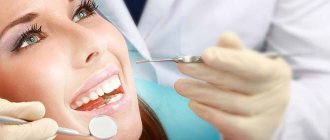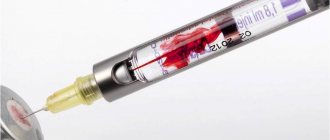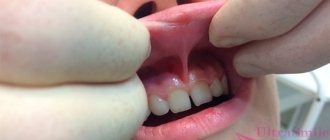How dangerous is x-ray?
In many cases, dental treatment is simply unthinkable without X-ray examination. When you can't do without it:
- when filling thin and curved tooth canals;
- to detect hidden carious cavities, caries under fillings;
- when the question arises whether wisdom teeth need to be removed (for example, if they are incorrectly positioned);
- to diagnose a tooth root fracture, cyst, determine the degree of inflammation of the tissues around the diseased tooth;
- when the issue of removing or restoring a tooth is being decided.
In the first three months, it is not advisable to take dental x-rays for pregnant women, since the fetus has not yet formed. Radiation can have an adverse effect on dividing cells, cause chromosome abnormalities and provoke intrauterine developmental defects. By the second trimester, at 16–20 weeks, the fetus is already fully formed - a tiny dose of radiation will not harm the baby in any way, so pictures can be taken without fear.
Dental X-rays during pregnancy are much safer than examinations of the pelvis or chest, because the mother’s belly is reliably protected by a lead apron, and dental examinations are always carried out using special devices with reduced radiation exposure. This applies to both old models and modern visiographs.
The need for x-rays before pregnancy
An X-ray examination performed during pregnancy planning may be needed in different cases. For example, in the absence of fluorography. It may be required at work if this period coincides with the next preventive medical examination. Or the expectant mother simply has not undergone such an examination for a long time, and now, in preparation for conception, she will have to do it.
Another option for x-ray examination is dental treatment. Before pregnancy, it is advisable to carry out a complete sanitation of the oral cavity to exclude foci of infection. Often during dental treatment, especially in cases of dental problems, it is necessary to take an x-ray.
Before planning a pregnancy, it is necessary to sanitize your teeth
There are situations when, in order to undergo a full examination before conception, the doctor, in addition to directions for tests, prescribes an X-ray examination of the abdominal organs. This procedure is especially necessary when you need to check the patency of the fallopian tubes.
Visiograph - an alternative to x-ray
A visiograph is a modern analogue of an x-ray machine. Its advantages:
- Allows you to take an image instantly, high-quality data is immediately displayed on your computer monitor.
- A narrow beam of rays is directed exclusively at the diseased tooth, does not affect adjacent tissues, and certainly cannot “touch” the abdomen.
- The duration of exposure (irradiation) is 10 times lower than when using old-style X-ray machines and is only 0.05–0.3 seconds. Radiation exposure is only 2 microsieverts (when using old devices - from 7 to 80 microsieverts).
For comparison, just sitting in front of the TV for three hours and enjoying your favorite series, a mother receives a radiation dose of 5 microsieverts. The safe radiation dose per year is 1,000 microsieverts (that’s 500 shots). Of course, you shouldn’t take the procedure lightly, but you shouldn’t panic and overestimate the danger to the baby either.
Features of x-rays before pregnancy
A situation may arise when a woman, having undergone an X-ray examination, subsequently finds out that she was already pregnant at that time. Awareness of what happened, and fear of “what will happen?” give no rest. In this case, you need to know exactly the timing of the procedure and the date (at least approximately) of conception.
The fact is that if radiography was carried out in the first third of the menstrual cycle (days 1-8), when the egg has not yet matured or been released, then there is nothing to worry about. If the egg was irradiated after ovulation, that is, when it had already left the ovary (in the second third of the menstrual cycle) and conception had occurred, then the question of continuing the pregnancy should be entrusted to a doctor.
Everything will depend on how strong the radiation was, how often it had to be done, and what it was intended for. So, if, when planning a child, the expectant mother takes an X-ray of a tooth, then that’s one thing (there is no need to talk about any irradiation of the egg here). But if an X-ray examination of the pelvis was carried out, and more than once, then, of course, this can negatively affect both the pregnancy that has already occurred and the planned one. In the second case, it will be better if conception occurs a month after the procedure.
How to minimize risks
What should an expectant mother do so as not to worry about the baby’s health?
- Not all clinics, especially municipal ones, have visiographs. It is better to inquire about this in advance.
- Be sure to use a protective apron and collar.
- You need to inform your doctor about the exact timing of your pregnancy. In case of a delay, even if the test shows a negative result, you must inform the specialist. In unclear situations, diagnosis (and treatment) are carried out as if pregnancy was definitely established.
- Severe pain, swelling, inflammation are good reasons not to delay a visit to the dentist, even in the first trimester. Unless absolutely necessary, the doctor will never prescribe dental x-rays during pregnancy and will try to do everything to postpone treatment to the 2nd, safe trimester or to the postpartum period. However, some acute conditions may require emergency intervention, such as purulent pulpitis or acute periodontitis. In this case, the mother needs to remember that a rapidly developing infection in the oral cavity will cause much more serious damage to the baby than 1-2 pictures on a visiograph.
- If there are concerns that the X-ray has somehow damaged the baby, you should consult with a geneticist and do an ultrasound. This will reassure those mothers who may have taken the photo without knowing that they were expecting a baby.
Since dental treatment during pregnancy is still associated with certain difficulties, the best thing an expectant mother can do is to go to the dentist and have all her teeth treated at least a month before the date of planned conception. And already in pregnancy, mommy should brush her teeth thoroughly and eat foods high in calcium.
X-ray of fallopian tubes before conception
If you have not been able to get pregnant up to this point, your doctor may suggest obstruction of the fallopian tubes. And in this case, an x-ray examination must be carried out. After all, it is this factor that determines whether the long-awaited pregnancy will occur or not. If there is an adhesive process in the tubes, then there may be no talk of fertilization for now.
The doctor can find out what condition the fallopian tubes are in only after an x-ray. This procedure is carried out using a contrast agent, which allows you to display the condition of the pelvic organs on the pictures. In addition to the patency of the tubes, an X-ray examination provides information about the presence or absence of fibroids, polyps and other formations, which is of great importance not only for the health of the unborn child, but also for the woman herself.
Quite often it happens that after conducting such a study, a woman becomes pregnant.
There is an explanation for this. The contrast liquid used for the procedure, injected under pressure, promotes the divergence of adhesions. As a result, the patency of the fallopian tubes can be restored.
This point must be taken into account when planning pregnancy and going through a similar process. Conception should not be allowed to occur during the same menstrual cycle, since the egg has received a large amount of radiation exposure. What do we have to do? If an x-ray is scheduled for the middle of the cycle or the last third (it happens that you can get pregnant during this period), then you should take care of pregnancy protection at this time, despite the great desire to have a child.
What do doctors think?
Doctors do not have a consensus on the effect of X-ray radiation on the unborn child at the planning stage. Some claim that it is absolutely safe and will not cause any harm.
Others say that there is still a certain percentage of negative impact, but it depends on the frequency of exposure over any period of time.
What should you do if, at the stage of pregnancy planning, you have to visit an x-ray room? How long before you can think about conceiving? It is clear that you still need to undergo an examination, and there is no escape from it. Therefore, it is best to count the days of the menstrual cycle. It is not recommended to take x-rays in the second and last third. However, this applies to x-rays of the pelvis or lower spine. If you are a very suspicious person who avoids pills, microwaves and computers, then you can postpone conception until the next menstrual cycle, so as not to worry then for the entire nine months.
Risks for mom
You can lose a tooth
We try not to use antibiotics, especially in the early stages of pregnancy.
This greatly changes the treatment tactics if we discover a chronic or aggravated purulent focus that has arisen due to an affected tooth. In a normal situation, we can try to save the patient's tooth under the additional cover of antibiotics that accumulate in the bone tissue. For example, this is a fairly common fluoroquinolone - ciprofloxacin. Everything is great, but it is strictly prohibited for use by pregnant women and children under three years of age due to the fact that it can cause defects in the formation of joints and cartilage. In a situation where the prospects for a tooth without antibiotic therapy in a pregnant woman are questionable, and the risks of developing an infection are high, we are usually inclined to remove such a tooth. It is much better to remove a potentially problematic tooth than to risk the health of the baby or the expectant mother. You cannot leave a chronic purulent lesion: it is dangerous for the child and for herself if it eventually worsens. If periostitis or, especially, phlegmon develops, the mother’s life will have to be saved. Then you will definitely have to prescribe antibiotics and other drugs.
Orthodontics
We stop the orthodontic treatment process if the patient reports pregnancy. First of all, we do this due to the impossibility of X-ray monitoring of the treatment process. Working with a bite blindly is a very bad idea and can end in even bigger problems. Most often, the patient remains at the stage when she found out about pregnancy. Either we continue to use the same aligner, or we simply fix the current condition in the case of braces.
Periodontal problems
The pregnant woman's body directs all efforts to pregnancy.
At the same time, he may ignore some of his own needs and problems. For example, large doses of sex hormones ensure good blood supply to the uterus and the desired condition of the mucous membranes. But in parallel, these same mechanisms lead to gum hypertrophy in the oral cavity. This is especially pronounced in the last trimester, when it becomes noticeable. According to various authors, gingivitis in pregnant women occurs in 25–100% of women, usually from the second to the eighth months of pregnancy. Moreover, in the region, 80% of women experience bleeding gums and have at least chronic catarrhal gingivitis. For the most part, all these symptoms will go away after childbirth and normalization of hormonal levels. However, without high-quality professional hygiene, there is a risk of developing more severe forms of periodontitis and damage to its structures. This also creates additional risks of accumulation of subgingival dental plaque and the development of multiple cervical caries.
To prevent such problems, we always recommend professional hygiene and give recommendations on what to do at home.
How much does the frequency of sexual contact affect the possibility of conception?
The frequency of sex is very important for conception. A healthy married couple who has sex 4-5 times a week has the best chance of conceiving. At the same time, repeated sex over several days, unfortunately, will not contribute to the growth of male fertility. In this case, the sperm concentration drops, and the likelihood of getting pregnant decreases. However, if a married couple is healthy, then they can choose any intimate schedule convenient for themselves. A healthy man's body produces enough healthy cells every day to conceive a child.
Is there a relationship between a man’s reproductive function and his potency?
More likely no than yes. A man may complain of poor erection, but he may have a normal spermogram. There are also cases when patients are completely satisfied with their intimate life, but suffer from severe infertility.
However, sometimes decreased potency and reproductive dysfunction are related. There are diseases that lead to disorders of potency and spermatogenesis. Another possibility is reduced fertility caused by weak ejaculation or sperm backing up into the bladder.
What is the relationship between a man's reproductive function and his age?
With age, hormonal changes occur in a man's body, the secretion of the gonads decreases, spermatogenesis decreases, and the consequences of environmental exposure accumulate. All this does not have the best effect on the ability to conceive. However, if a man leads a healthy lifestyle and monitors his physical condition, then his reproductive functions can be maintained until old age.
But in fairness, it is worth noting that in the sperm of older men, a larger number of cells with a broken DNA strand are found than in the sperm of younger men. Fertilization with such sperm leads to genetic abnormalities of the fetus and miscarriages (even if the woman is much younger than her partner). However, the sperm of an older man also contains sperm that can fertilize an egg.
Can you trust the equipment?
Today, modern digital equipment is used to conduct radiographic examinations. This, of course, does not eliminate X-rays, but many doctors believe that minimal radiation received after the procedure will not cause any harm when planning a pregnancy. In addition, X-ray itself is a fairly informative diagnostic method that allows you to identify many pathologies, so it should not be ignored.
However, many, especially people of the older generation, are sure that after an x-ray, the unborn child may develop various pathologies and developmental anomalies. However, if there is no child yet, where will they come from? If you are very worried about the upcoming fluorography or dental x-ray examination, then you can ask the doctor for a protective apron. By the way, they give it anyway, especially when conducting examinations using old-style equipment.
Individual X-ray protection equipment is used during the study.

